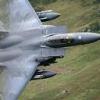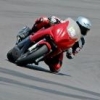Leaderboard
Popular Content
Showing content with the highest reputation on 02/19/2012 in all areas
-
This guy "mitchell.alaska" on Flickr has some of the absolute best aviation photography I've seen. Of course, I may just be partial since he's AK ANG and as a result they're mostly CSAR- https://www.flickr.co...s/25702253@N04/ Unfortunately he recently set most of his images to private or something, so the majority don't show up. Somehow using search I was able to turn up a few shots, but they're no longer the super high-res versions. That being said, if you have the time be sure to go through all of them- https://www.flickr.co...%40N04&ss=2&z=m Here's some of his air to air pics-4 points
-
3 points
-
I just realized that after I tracked this info down and was able to put on a pretty bad-ass presentation for Donk last year, I never brought it back to the forum. We merged the narrative (below) with the citation (link on first page) and threw in the video Hoss provided along with some pictures of Donk (to include his gear in the AF museum). Most importantly, it drove home the point we were trying to make to the folks who had been working for him. This is the script for the speech that Donk and Coke (the BALO) gave after they were awarded the Silver Star. Thanks to everybody here who helped make this happen. ---------------------------- ADVANCE 33/DEMOB 71 NARRATIVE Sequence of Events: Coke: On 6 April 2003, Task Force 2-69 Armor began its attack into northwest Baghdad. Starting early that morning over 200 kilometers from our objective, we pressed north, becoming the spearhead for the 3rd Infantry Division. 40 kilometers from our objective we made contact with the enemy, taking sporadic, but accurate, artillery, RPG, and small arms fire. Fighting a running battle through the outskirts of Baghdad, we finally reached and set up hasty defensive positions in order to secure our final objective, a bridge crossing the Tigris River. We now represented V Corp’s northernmost push into Iraq, and sat square in the enemy’s backyard. Coke: We had been on the move for over 10 hours. We were waiting for our supply trains to move forward so we could refit with fuel and ammo-both of which we were very short of. Aware of our vulnerability, and based on the horrible visibility across the Tigris, I submitted a 1972-a request for Close Air Support-to recon the far side of the river. I was immediately passed contact information for Demob 71 flight, 2 x A-10s, and when they checked in, authentication was easy as I recognized the voice of my squadron DO. Coke: A little excited with the prospect of working with Lt Col Strasburger, I passed an AO update, a 9-Line Brief, and a “map” talk-on of the AO. Within minutes of our first radio contact, the Alpha company commander, our most-forward element on the western approach to the bridge, called me on Fox Mike, “Can I get some CAS in here, we’re taking heavy AT rounds from across the bridge and I can’t see them to shoot back”. Pinned down, taking direct fire, low on fuel and ammo, and unable to find the main element of the enemy force due to the poor visibility, the battalion was in dire straights. I jumped on the radio and told Demob: “We are taking heavy fire, and we need you in here now!” Donk: Demob 71 flight had launched on their second sortie of the day from Tallil AB, Iraq. I was the Flight Lead, and Captain Greg “Billy Bob” Thornton was my combat pair. Upon check-in with the ASOC, we were directed to contact a Ground Forward Air Controller (GFAC), C/S Advance 33, in the northern part of Baghdad. Upon check-in, we discovered that it was 1 Lt John “Coke” Blocher, one of our own Lieutenant BALOs. Donk: The situation on the ground appeared static at first, but when “Coke” made the call for help, Billy Bob and I knew that the situation was rapidly deteriorating. We immediately initiated a descent west of the target area, and determined that the weather was 4,000-foot ceilings with a mile to a mile and a half visibility. We continued toward the target area, and I briefed low-altitude tactics due to the weather. Donk: Unable to maintain continuous sight of each other, we used an altitude stack and a Target Engagement Zone (TEZ) to maintain positive deconfliction and mutual support. Coke: I briefed that the friendlies were on the west side of a bridge over the Tigris River, and were taking heavy fire from the east. I also restricted Demob’s attack axis from south to north or north to south in order to parallel the friendly position. Donk: The extremely poor visibility made a “hot” first-run attack impractical due the risk of fratricide. I also inquired about US Marine Corps forces on the east side of the Tigris River and Coke confirmed they were no factor. Donk: With Billy Bob maintaining cover to the west, I initiated the first pass into the target area. The goal of the first pass was to positively identify both the enemy and the friendly positions prior to expending any ordnance. I executed a low altitude ingress using the Tigris River as a lead-in feature to acquire the target area. While inbound to the target, I observed light to medium AAA firing on the flight. I visually acquired the bridge at a mile and a half, and attempted to mark the enemy force on the eastern bridge abutment with “Willy Pete” rockets; unfortunately, they hung. As I pulled off that pass, I dispensed a series of self-protection flares to “mark” the target area. Coke: I immediately confirmed that Demob had identified the correct target area with his “mark.” Donk: As a result of the reconnaissance pass, I determined that the separation between friendly and enemy forces was in fact 400 meters as opposed to 1.5 kilometers as briefed during the 9-Line. Donk: During the egress off the recce pass, I observed light to medium AAA firing on the flight. I initiated an immediate re-attack. Again, using the river as my primary reference, I attacked with the gun from south to north, strafing enemy positions under the bridge, and the lead enemy vehicle. Coke: I confirmed good hits on the targets under the bridge, but could not verify BDA on the vehicle due to poor visibility. Donk: I cleared to the west in order to provide my wingman with mutual support. Billy Bob executed his first attack and strafed a T-72 tank 500 meters from the friendly position with good secondaries observed. Donk: At this stage, it was getting pretty busy, but I felt as if things were going well and we were making a difference for “Coke” and his unit. That’s when I noticed my HUD had failed, and the only aiming reference I had was the Standby pipper. I reverted to my old-school training, used the Standby pipper, and continued to press the attack. Donk: Over the next 12 minutes, with the concentration of AAA firing on the flight increasing, we made 4 additional gun attacks, engaging tanks, BMPs, and utility vehicles from the east end of the bridge to a traffic circle 500 meters to the east. We observed multiple secondaries, and Coke indicated that the intense firing on the friendlies had begun to drop off. Donk: Now, with the situation stabilized, and “Coke” confident we had high SA, we adjusted our attack axis to ingress from northwest, “over-the-shoulder’ of the friendlies. Despite the heavy volume of AAA, we executed 3 more gun and maverick attacks, targeting BMPs, utility vehicles, AAA pits, and two small buildings from which the friendlies were taking fire. The attacks were effective, with multiple secondaries observed. Donk: As we egressed the immediate target area due to gas, “Coke” said: Coke: “You guys really took the heat off of us. We are not taking anymore fire from the enemy positions – we’ve got a very satisfied battalion commander down here.” Coke: Following this 33-minute engagement, the enemy completely broke contact from across the bridge, and the only enemy action for the remainder of the night was ineffective small arms and RPG harassment fire. Finally, 7 and a half hours later, we were re-supplied with fuel and ammo. I characterize this engagement as the “most serious” Task Force 2-69 Armor encountered during the entire war, and in this case, airpower turned the tide of the battle.3 points
-
1 point
-
I've never respected commanders who made "it" about themselves (like radical uniform changes, excessIve AFN commercials, etc.). The ones I respected cared about the mission and looked after those doing it. The focus was never on them unless they were out front leading the mission. I've never met McChing or whatever she is called, but it seems to me that with her law suit and other things attributed to her, she put herself above mission accomplishment and those doing it. I could not support any political candidate with that history, regardless of political affiliation.1 point
-
1 point
-
Maybe. Maybe not. There are people who stand out in history for the right reasons - some milk their fame, others don't (and in Rossi's case, she didn't live long enough to have a choice). I only knew about her because this guy talked about her. He talked not about her gender, but about the fact that she had brass balls. She stands out for the right reasons. True.1 point
-
WTF is right. How in the hell does this shit happen? (Rhetorical question. That's what happens when Daddy's in charge)1 point





